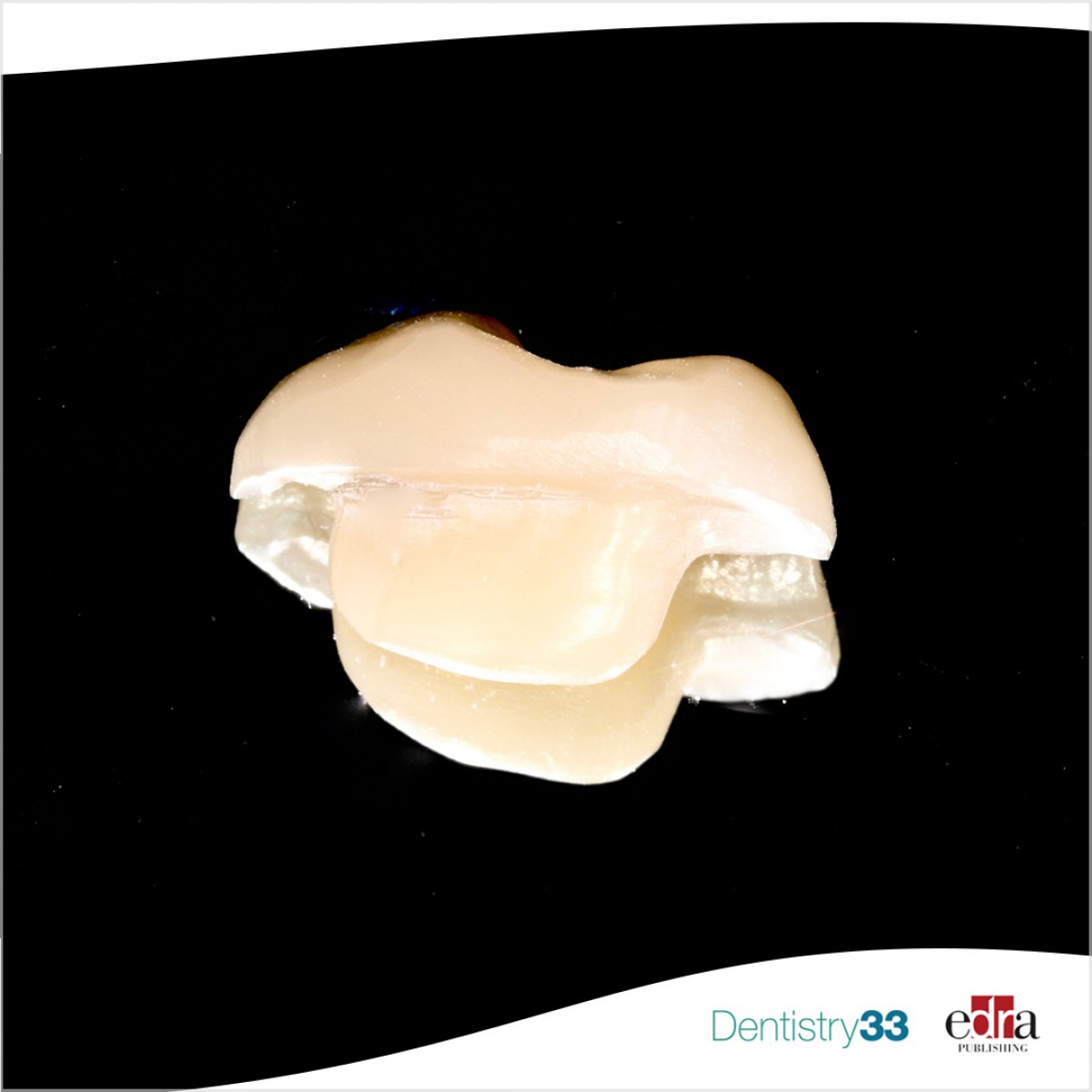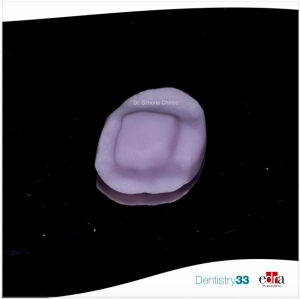
How much does the thickness of lithium disilicate affect the fracture resistance of the endocrown?
Simona Chirico
The restoration of severely damaged endodontically treated teeth is still a discussed topic in dentistry. Today, the most common restoration for endodontically treated teeth involves post and crown, even if we know that posts increase the risk of root fractures and weaken the teeth.
With progress in the development of adhesive techniques, the emergence of minimally invasive dentistry changed the conception of using post and crown in every situations. In recent years the use of endocrown, as a restoration for endodontically treated teeth, has been spreading more and more and it has recorded excellent results not only in “in vitro” studies, but also in “in vivo” ones.
The most used material in the production of endocrown is lithium disilicate, because it guarantees high resistance. Is this resistance always guaranteed even when the tooth is severely compromised? The study conducted by Turkistani et al. answered this question by evaluating the fracture resistance and failure mode of ETT restored with lithium disilicate ceramic endocrowns of different crown thicknesses.
Materials and Methods
A total of 30 endodontically treated permanent mandibular first molars were sectioned horizontally 2 mm above the highest point of the cemento-enamel junction. The specimens were divided into three groups, and each group was restored with lithium disilicate (IPS e-max press) endocrowns of different crown thicknesses (3, 4.5, and 6 mm, respectively). After cementation, specimens were stored in room temperature for 72 hours, followed by subjecting them to com- pressive strength testing until failure. The fracture loads and the failure mode were recorded. Statistically analysis was performed using one-way analysis of variance.
Results
A statistically significant difference was found in the fracture resistance between the three groups with the highest fracture resistance in the 3 mm group, followed by the 4.5 mm group, and the least in the 6 mm group (P < .05). Most of the failures were accompanied with tooth fracture (90% in 3 mm group, 100% in 4.5 mm group, and 80% in 6 mm group).
Conclusions
The fracture resistance of the lithium disilicate endocrown is influenced by the thickness of the material. The thicker the material, the lower the fracture strength.
Minimum fracture loads for all teeth restored with endocrowns were significantly higher than the maximum occlusal forces reported in the literature.
For additional information: Fracture resistance of teeth restored with endocrowns: An in vitro study
 Related articles
Related articles
Endodontics 28 February 2023
Chirico works in private practice in Milan and Desio, Italy. Her principal areas of expertise are digital dentistry, endodontics and restorative dentistry. ...
Prosthodontics 12 February 2023
There are various types of materials used to perform this type of restoration. But which of these has a better mechanical behavior?
Prosthodontics 09 September 2022
Evaluation of Endocrown preparation and fracture resistance in endodontically treated teeth
Lateral-posterior teeth, after endodontic therapy, require adequate restorations to re-establish masticatory function and minimize the risk of fracture, as well as ensure a perfect seal to prevent...
Digital Dentistry 29 July 2022
Endocrown VS Crown+Post: which is the best restoration for endodontically treated teeth?
The restoration of endodontically treated teeth is still a discussed topic in dentistry. Today, the most common restoration for endodontically treated teeth...
Endodontically treated teeth restored with crowns are reported to have an higher success rate compared with endodontically treated teeth restored without cuspal coverage. Furthermore, modern adhesive...
 Read more
Read more
Oral pathology 25 November 2025
Virtual microscopy (VM) is a technology for showing microscope slides using computers and could be considered a progression of classic methodology using optical microscopes.
For every assist this season, the insurance provider will donate $25 to TUSDM Cares for Veterans
Products 25 November 2025
J. MORITA USA, a world leader in handpiece technology, has announced the Rotary Master+ Electric Motor. Compatible with Morita TorqTech electric attachments and most competing electric handpieces on...
News 25 November 2025
Let’s be honest: nothing kills the vibe quite like bad breath. However, while 85% of people prefer for someone to tell them if their breath needs some freshening up, only 15% are willing to break...
News 25 November 2025
Vitana Pediatric & Orthodontic Partners (Vitana), a dentist-led dental partnership organization (DPO) focused exclusively on elite pediatric dental and orthodontic practices with operations in...















